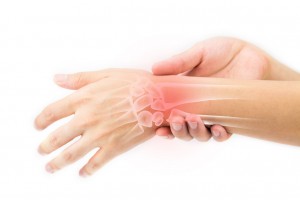- Home
- PBMt/LLLT
- Conditions
- FAQ/Costs
- Cases
- Media
- References
- Contact Us
- Meet the Doctor
- Dr Parmar’s Blog
- Home
- PBMt/LLLT
- Conditions
- FAQ/Costs
- Cases
- Media
- References
- Contact Us
- Meet the Doctor
- Dr Parmar’s Blog
(03) 8529 2225
De Quervain’s tenosynovitis or wrist strain, wrist tendonitis, can be successfully treated with LLLT to achieve resolution.
To view cost of treatment click here.
GP, Dr Shikha Parmar, Causes Causes De Quervain’s is an overuse injury. LLLT is a complete therapy for a multitude of causes of wrist and thumb tendonitis that all have a common cause of inflammation resulting from: Two tendons in the wrist and lower thumb normally glide smoothly through the small tunnel that connects them to the base of the thumb with gripping, grasping, clenching, pinching or wringing anything in your hand. Repetitive movements or overloading of the wrist day after day strains these two tendons and also irritates the sheath around them. This causes thickening and swelling of the tendon sheath that restricts tendon movement and contributes to the pain. Symptoms Pain occurs with movements involving turning the wrist, gripping or grasping, pinching, and making a fist. There may be swelling near the base of the thumb. The longer the problem remains untreated the higher the chance the pain spreads further into thumb, up the forearm or both. Diagnosis A diagnosis is usually able to be made based on the history and a physical examination The thumb side of the wrist will be tender to touch and may appear swollen. A Finkelstein test, involves bending your thumb across the palm of your hand and bend your fingers down over your thumb. Bending your wrist toward your little finger causes pain on the thumb side of your wrist with de Quervain’s tenosynovitis. An ultrasound may also be performed to demonstrate inflammation wrist tendons and overlying sheath. Treatment LLLT WORKS WHERE TAPING, ICING, STRETCHING, MASSAGE, EXERCISES AND Traditionally, treatments for de Quervain’s tenosynovitis consist of temporary pain relief using anti-inflammatory medication, rest, and icing the area. While ice numbs the pain it also prevents healthy blood flow which is essential to providing oxygen and nutrients to the area to heal it, and remove waste products and CO2. Ice should therefore not be applied to chronic injuries such as de Quervain’s. Repeated icing of the wrist injury therefore may actually be a reason for non-healing. Also see here A number of other treatments are described in the literature e.g. massage, stretching. These measures are often painful to the sufferer and none of these definitely heal the tissues. Stretching an injured tendon and its overlying sheath further stresses the micro-tears in the substance of the tendons and the fascial collagen tunnel that connects them to the base of the thumb. Stretching is often painful to perform and does not assist in the tissue’s attempt to repair the small tears. It is not possible to heal damaged soft tissues through strengthening exercises. The injured tissue needs to heal and exercise does not promote healing of the injured tendons. Anti-inflammatory medications including cortisone (steroid) injections do not heal tissues and simply act by masking pain. Any anti-inflammatory effect of such medication has the detrimental effect of suppressing the body’s own natural immune healing response. In addition, use even beyond a week of oral anti-inflammatory medication is associated with a number of problematic side-effects and evidence indicates these medications in fact can delay tissue healing. Low Level Laser Therapy (LLLT) is an effective, painless, non-invasive treatment option for de Quervain’s tenosynovitis. This treatment is backed by over 40 years of scientific research and clinical evidence. LLLT removes the obstacles to healing, being inflammation, and stimulates the body’s own healing processes thereby promoting tissue healing. Read in detail here how LLLT undertaken as part of a therapeutic treatment plan at Laser Pain Therapy can resolve de Quervain’s tenosynovitis, effectively and affordably. To see how Low Level Laser Therapy can help your condition contact us for more information or to make an appointment.
Laser Pain Therapy
has a special interest in providing a drug-free safe, effective treatment solution in Melbourne for acute injuries and chronic pain using low level laser light therapy (laser therapeutics).

De Quervain’s tenosynovitis causes pain and tenderness on the thumb side of the wrist to the base of the thumb.
ANTI-INFLAMMATORY MEDICINES INCLUDING CORTISONE INJECTION HAVE ALL FAILED